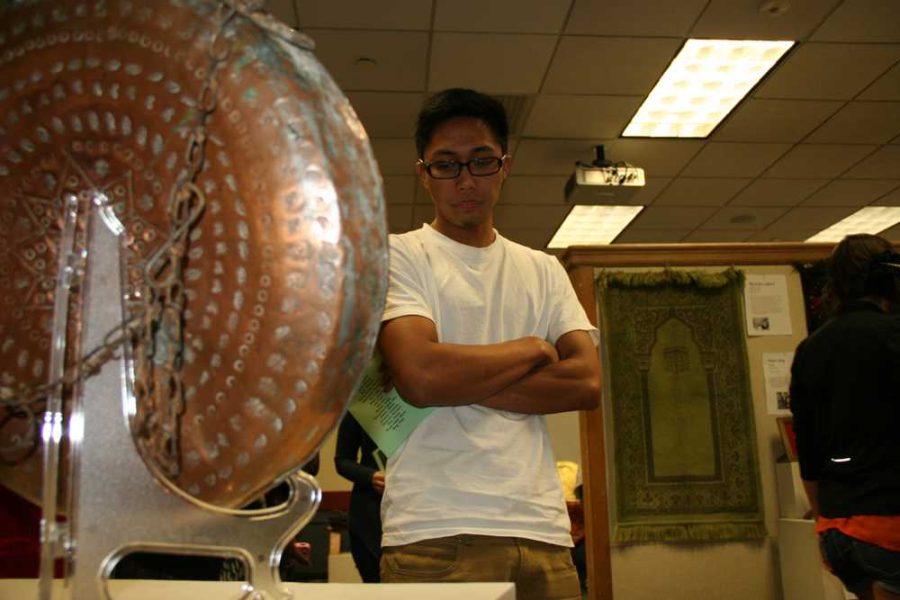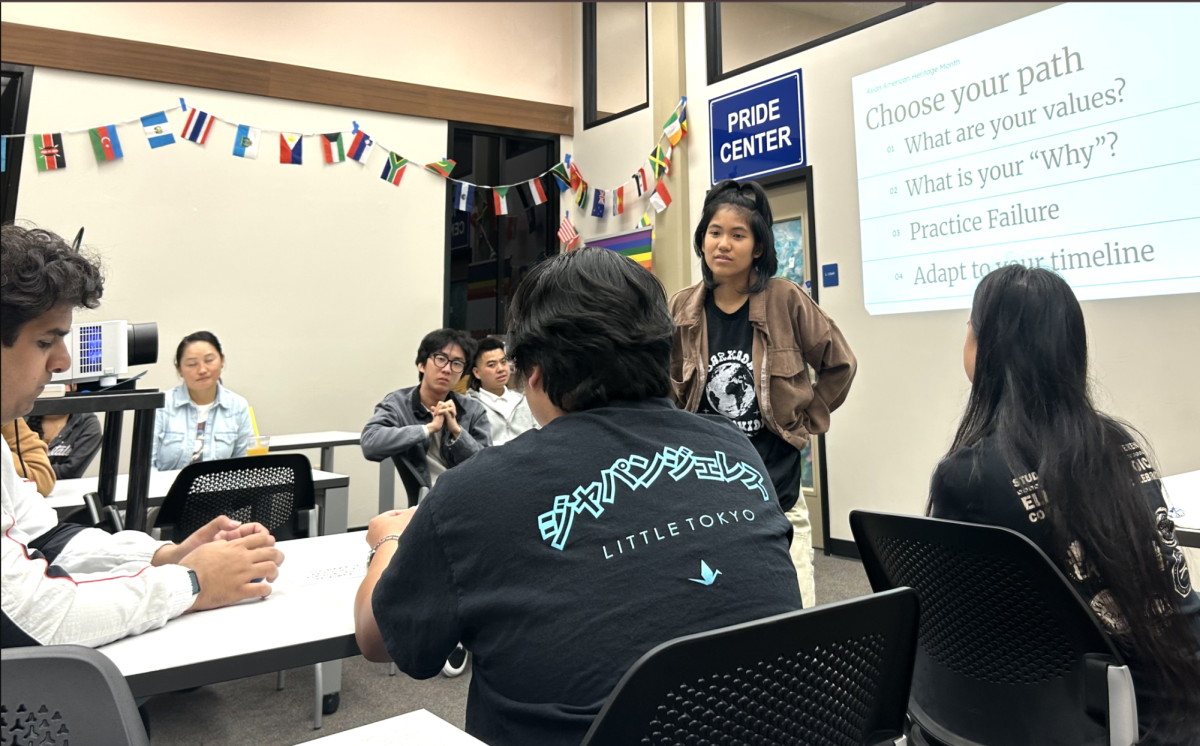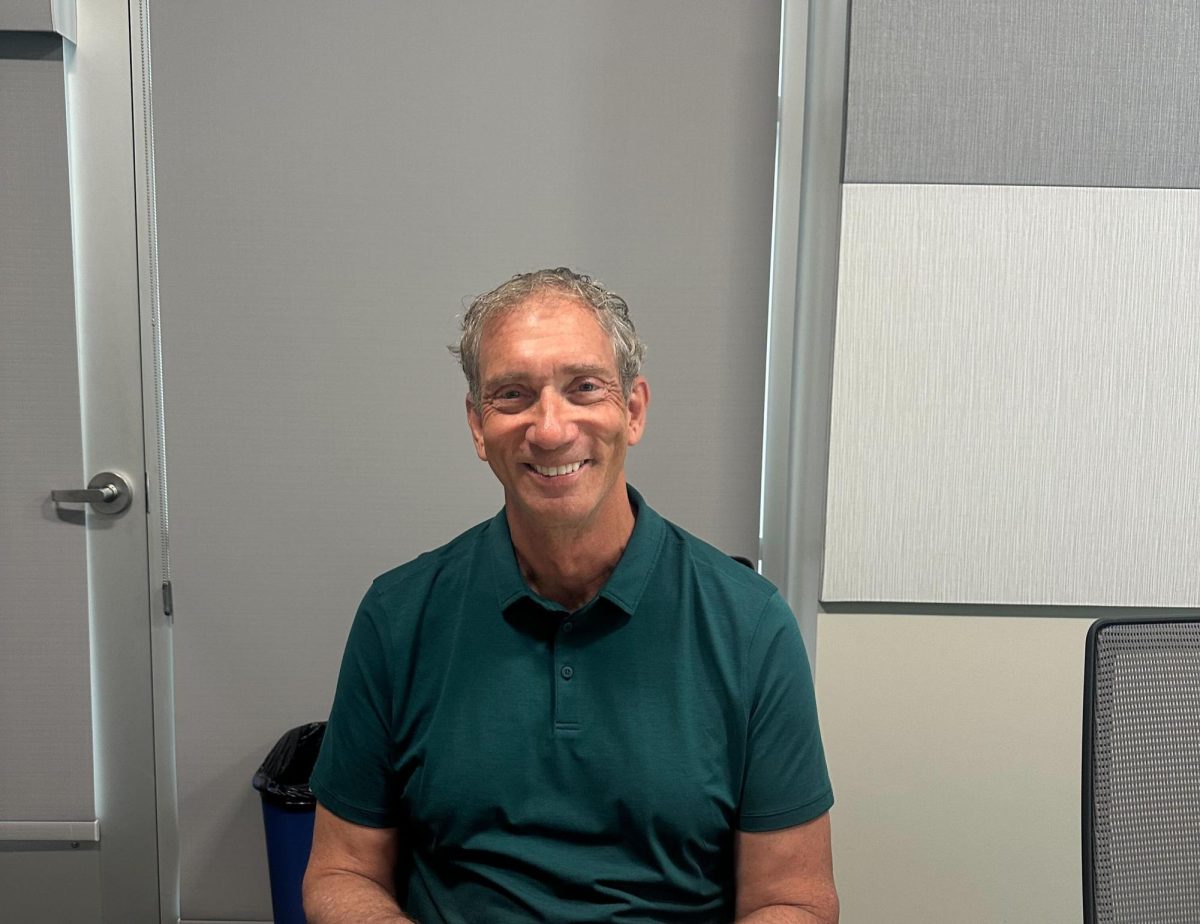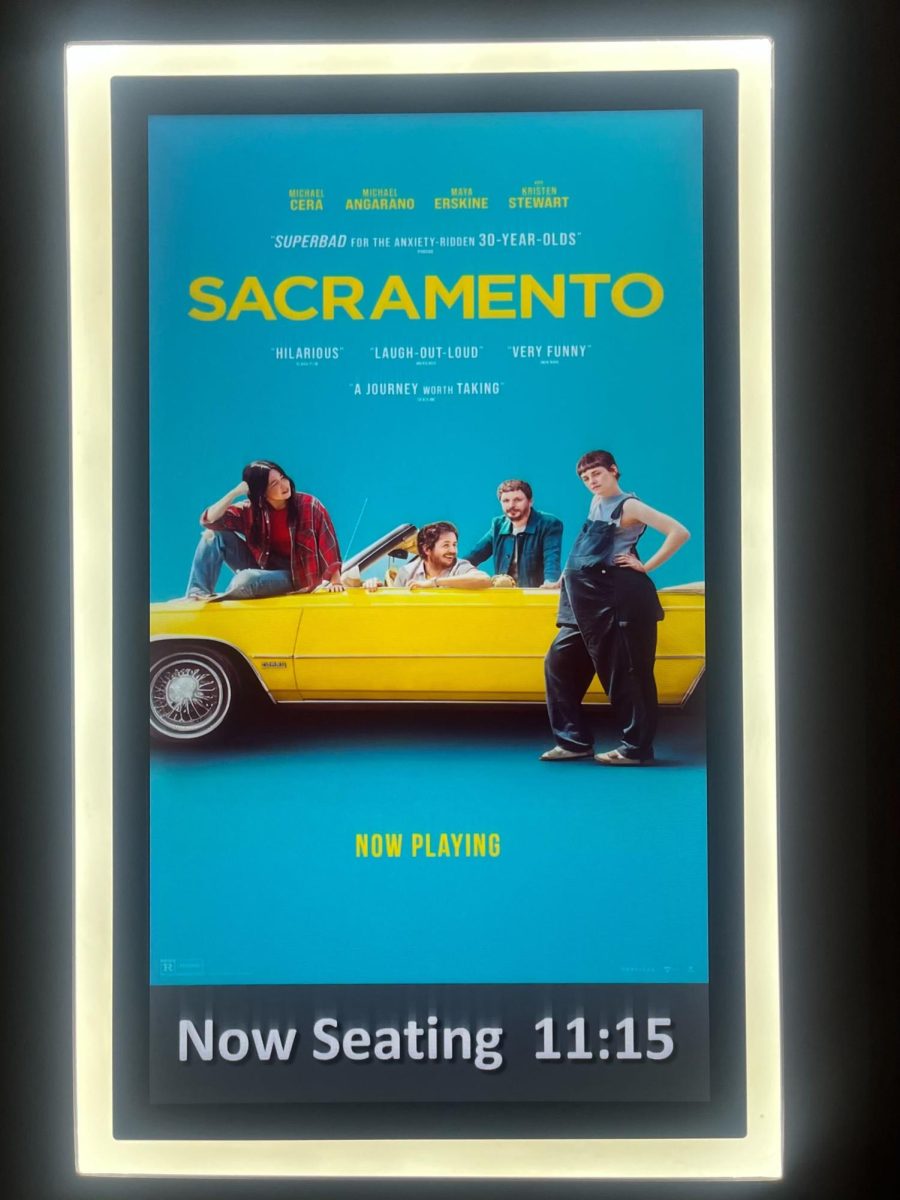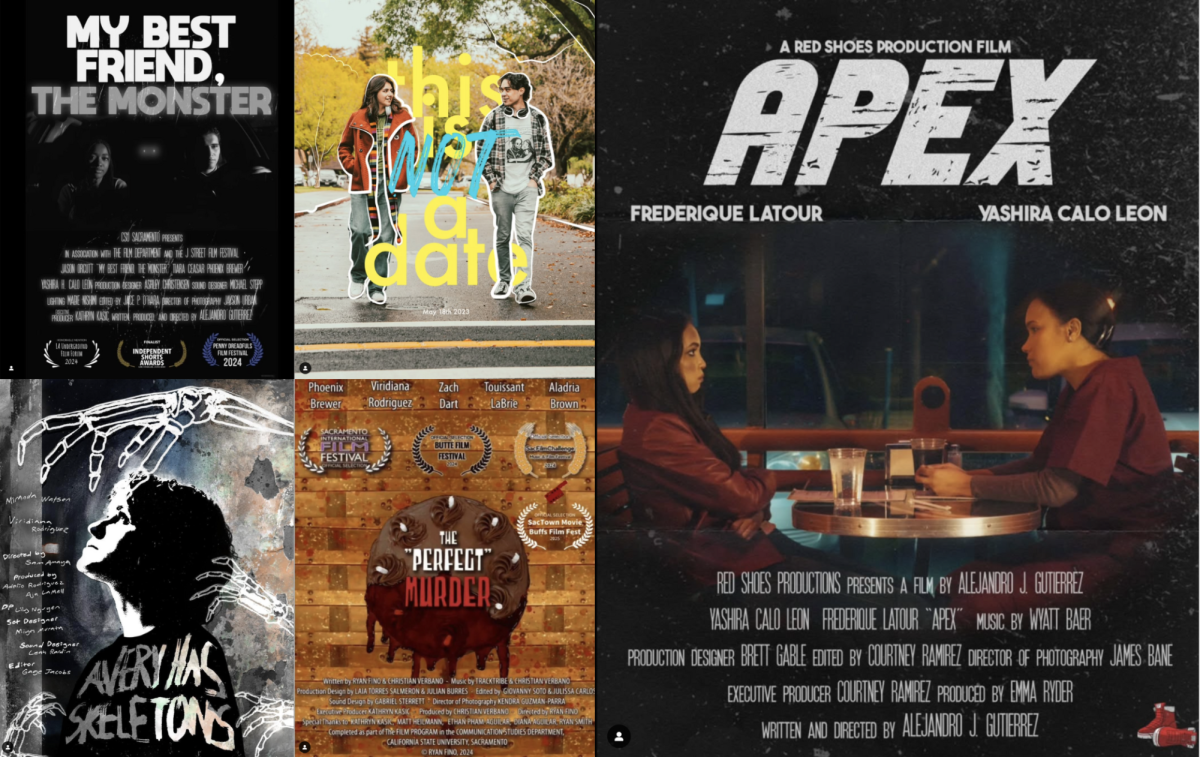Henna, metalworks and prayer rugs spotlight Islamic Art at campus exhibit
Rondell Almodovar, 21, an architecture major checks out a water canteen at the Islamic Art exhibit at Cosumnes River College on April 30.
May 12, 2013
Students and staff of all faiths trickled in and out of the Orchard room to admire modern and decades-old traditional Islamic art, some of which dated back to the 1950s and beyond, on April 30.
Professor Anna Trent helped her Islamic Art History students put together an exhibit to showcase the unique characteristics of traditional art that originated in the middle-east.
“My students are doing this, not me,” Trent said. “I just guide them.”
Trent teaches six art history classes including an ancient art history course. Of the six classes she teaches, Trent chose Islamic art class because of what she saw in her students.
“I saw the potential. They work well in groups,” Trent said.
A lot of the art in the museum was brought in by Trent’s students. One student brought in a prayer rug that their family used, another student had a perfume bottle brought back by her boyfriend who served in Iraq.
A few items, such as a carpet from Iraq, were donated for the exhibit by Trent, and several pieces were brought by other teachers.
Many of the pieces in the exhibit were original pieces that came from middle-eastern countries, and each item had a description that explained the origins of the art and the piece.
Examples of Islamic metalwork were on display as well. One item Trent was excited about was a water canteen from the 20th century used by nomads or Bedouins who travelled in caravans.
The canteen had been hand-hammered into a star-like design on one side, with a floral design on the other.
Items such as woven carpets, water pipes and jewelry also reflected very traditional Islamic styles of art as seen on the canteen.
Another part of the exhibit was a henna demonstration, presented by 23-year-old biology major Nikki Olesen.
Olsen is in Trent’s art history class and does henna tattoos as a hobby.
“I started doing this about 10 years ago,” Olesen said. “I got more serious about it when I started this class.”
Olesen did several tattoos for many students and visitors and even faculty throughout the day, creating examples of traditional Islamic art with some modern incorporation.
Trent explained the tradition of new brides having henna scrollwork all the way up their arms as a display of art and beauty.
While henna is a popular art form in Islamic and middle-eastern cultures, calligraphy is a more prominent style of art.
“Calligraphy means “beautiful writing”,” Trent said. “The writing becomes a work of art.”
A number of pieces in the exhibit had calligraphy woven into the designs including a ceramic plate with the 99 names of Allah, Islam’s god and a large silver coin with an intricate signature on one side.

